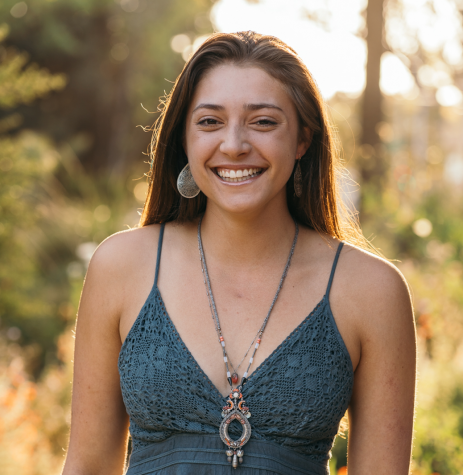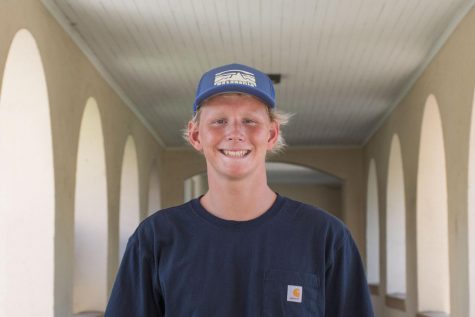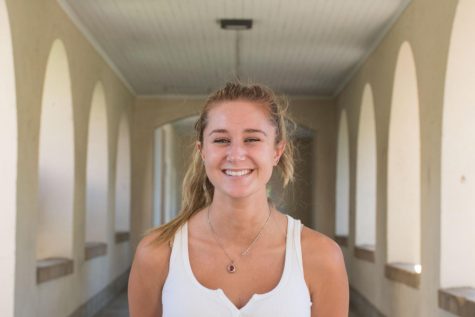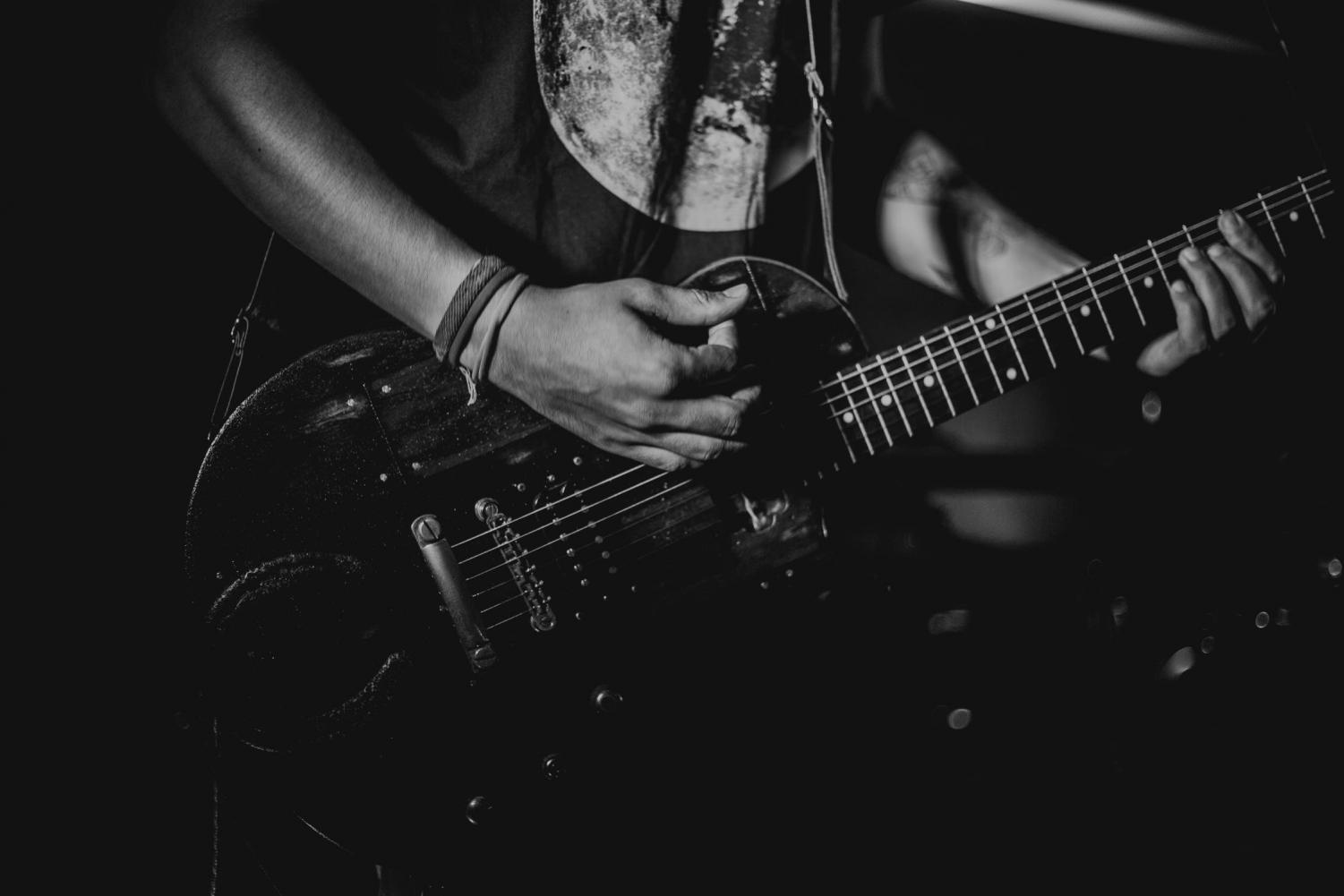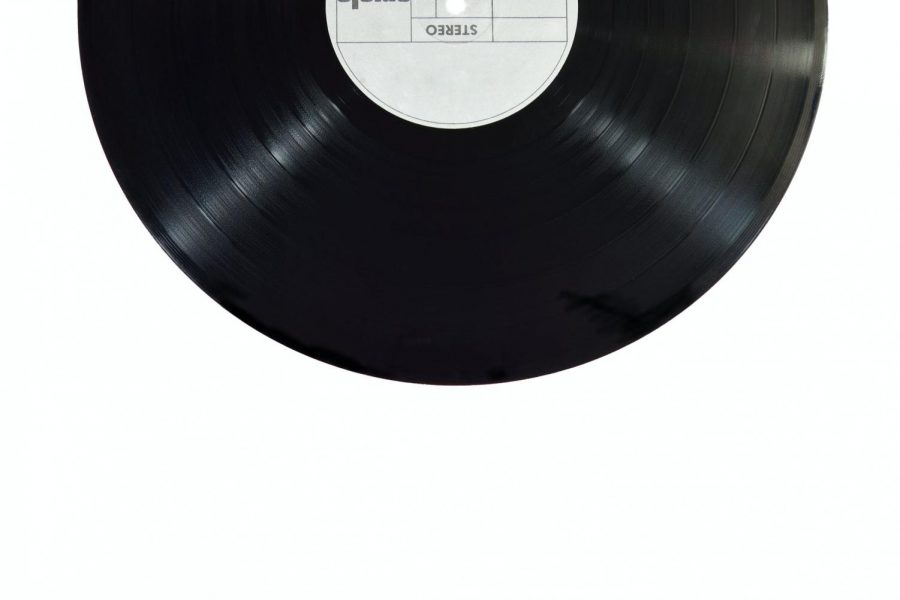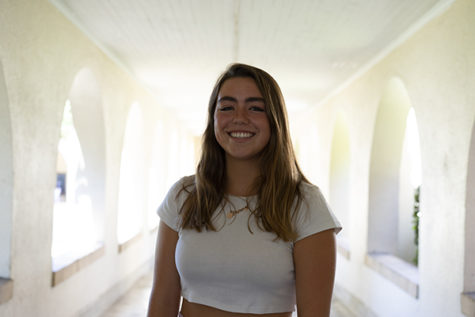7 MIN READ
A tie-dyed mask, adorned with dancing bears, sits atop his thick mustache, which can be seen peeking out the sides. A glass bottle of apple juice sits open on the picnic table, while Rob Levitsky sits in complete tranquility. Touch of Grey, one of the seven communal houses available to people from all walks of life, reveals itself in the afternoon sun. College students sit in solitude with their windows open, lightly clacking on the pads of their keyboard. “What I’ve done, that’s sort of the family aspect,” Levitsky said. “As I’ve been able to, I buy more houses, and now we have this community, not necessarily listening to the Grateful Dead but you know, they’re living a kind of a commune life to some extent.”
Rob Levitsky—lover of community, family and especially the Grateful Dead—is the owner of seven eclectic houses. He emulates the essence of this timeless and incredibly influential band, although, due to the fact that Levitsky has attended over 300 Grateful Dead and Dead and Company shows, one might call it a lifestyle.
The Grateful Dead was a band that truly connected with its audience and amassed a group following with its talented members like no other group. Formed right here in Palo Alto, the influential band consisted of Jerry Garcia, lead guitarist and one of the most famous members, Bob Weir on guitar and vocals, Bill Kruetzmann and Mickey Hart on drums, Phil Lesh on bass and Ron “Pigpen” McKernan on vocals, organ and drums. Their unique concerts and passionate music brought people together from around the world. Today, the Dead lives on in the form of the band Dead and Company, with remaining members Bob Weir, Mickey Hart and Bill Kreutzmann.
Levitsky bought his first communal home in 1982 with a group of friends, renting out the extra rooms to cover the costs. “It just kind of grew from that,” Levitsky said. While the Grateful Dead-inspired house names purely stemmed from a love for the music, they ended up drawing in some of the actual Grateful Dead band members. “As I became friends with some of the band, they then knew about it and would sometimes visit, and then eventually John Perry Barlow, a Grateful Dead lyricist, lived here for a couple years,” Levitsky said. “He died a couple years ago too, but I named one of them after him; it’s called Barlow’s choice.”
“
There is just a vibe that you get when you hear a song you really like, and when you see Jerry play the guitar, you’re just like, ‘Oh My God’.
— Don Ragno
The idea that music extends into life, farther than just the acoustics of our ears, is not an unknown truth. Bringing the Dead community into all aspects of life is a common theme among Deadheads. Similar to Levitsky, Zoë Wong-VanHaren, a recent Paly graduate, found love and connection in the heart of the Grateful Dead community. “I’ve come to realize the full power that music has to unite people,” Wong-VanHaren said. “It’s incredible to me that entire communities and families have formed around the simple idea of loving the same music.”
Wong-VanHaren has found that Deadheads draw a lot of inspiration from the music. “Whether that be creating Dead-inspired art, or taking the advice of lyrics from songs, I think Deadheads find endless ways of incorporating the Dead into their lifestyles beyond just enjoying listening to the music,” Wong-VanHaren said.
An environmentalist and a musician herself, Wong-Vanharen was surprised at the sheer amount of similarities, yet complete individuality among Deadheads. “Since so many Deadheads are themselves also musicians, I’ve been able to find more opportunities to play music,” Wong-VanHaren said. “I also find that a good amount of Deadheads are outdoorsy people, so they have inspired me to be more active and to conserve nature.”
Levitsky, having played the guitar for his entire life, understands the importance of learning an instrument and even simply listening along; which can be seen in the hundreds of Grateful Dead cover bands across the country. “Music is an important part of brain development,” Levitsky said. “It’s a complicated thing, to save music and hear and repeat melodies and identify songs.”
With everything constantly evolving and changing in the digital age, the Grateful Dead has remained a meaningful and constant part of Levitsky’s life. Levitsky holds onto the unbreakable legacy left by the Grateful Dead, but unfortunately he has had to watch important cornerstones of Grateful Dead history disappear. “Life is a lot different than it was 40 years ago and not necessarily for the better,” Levitsky said. “And the places where the Grateful Dead met, which was a place called Dana Morgan’s music store downtown, is gone, and there’s nobody teaching lessons there anymore.”
At the heart of Silicon Valley, the Grateful Dead’s concerts, music, and spirit continues to become digitized and shoved behind a screen. “People [are] not interested in playing music anymore because music has become a free thing,” Levitsky said. “It’s just a stream; it’s there, it’s everywhere.”
What the Grateful Dead has brought into this world is now changing. The impending fate of the communal houses is bleak in Levitsky’s opinion. “Once I’m gone, it’ll disappear,” Levitsky said. “The houses [will] just get sold off; they’ll get turned into McMansions.” The eclectic houses that have been a central part of the Deadhead community in Palo Alto will soon be no more; the fences will be erected between the houses and the community will fade away.
The Grateful Dead was a band known for establishing a free spirit lifestyle for those who were die-hard Deadheads. Some claim that Deadheads were one of the most devoted fan bases; they followed the band to each concert venue throughout their tours. They were so idolized through the years that their legacy has continued to prosper in future generations of teens.
“
If I had the choice to be born back then, I would save all my money, and just stay on tour and follow them from the ’60’s till the end. It’d be my whole life.
— Phela Durosinmi
Alex Washburn, a Paly senior, is one of those teens. After being introduced to the Grateful Dead by his brother, Washburn went to see many Grateful Dead tribute bands like Dead and Company, Joe Russo’s Almost Dead (JRAD) and The Grateful Shred. Among them was one amazing JRAD show this past year at Stanford Frost Amphitheater. “There was a couple next to my friends and I, and they just started crying,” Washburn said. “I never personally witnessed [music] that was so meaningful and so powerful to these people that it brought them to tears.”
While Washburn had witnessed the present form of the Dead a handful of times, Grateful Dead fan and Palo Alto community member Eric Ellisen, has attended over 200 shows of the original Grateful Dead band during his life. While traveling around the country for the band, Ellisen recalls the significance of the band’s music and passion, as well as the people who brought light to the community.
“[Friendships kept] it interesting, still the music, but also the friends that I made along the way, some of whom I am still close friends with today,” Ellisen said. The welcoming demeanor and lack of ‘requirements’ brought people together from all different backgrounds; they shared a common love for the band, and thrived on the enigmatic feeling of belonging to a community that didn’t belong anywhere else.
Another life long Deadhead, Palo Alto Community member Allen Bush, could only listen to their music through old records and live performances. “It’s hard to describe what their music sounds like; it was never on the radio,” Bush said.
Bush first heard them through records in high school, but he didn’t attend any of their concerts until college, which was at a race track, and it was a completely different feeling from anything he had experienced before. “Some songs were 15-20 minutes long. You were always going to hear something different every time,” Bush said. “Fans would follow them around because no show was the same, they improvised as they went.”
Bush attended around 75 concerts around California, and he holds a memorable moment from each one. To Bush, the parking lot gatherings hours before the concert were the most important part before the event; it’s known as “Shake Down Street,” named after a famous Grateful Dead song. “The merchandise and the food in the parking lot were the big event that happened all day before the concert; the music was only the climax of the day,” Bush said.
“
The Grateful Dead arguably has the most complex, elusive and multi-layered identity of any band to emerge in the ’60s.
— Alex Washburn
At one concert he can recall, Bush says there were beach balls in the crowd, everyone was dressed up in tie-dye and had bright smiles on their faces. “They were around for so long, and being a fan became a lifestyle that people enjoyed,” Bush said. “Every show is like a family reunion … the happiness and the shared community in the crowd is infectious.”
Like many other Deadheads, Don Ragno, a Deadhead with 40 years of concerts under his belt, also believes that the people create the classic Grateful Dead concert experience. “It’s really a collection of free spirited people; there’s a lot of love,” Ragno said. He saw the concerts not only as a place where people could come together for a central passion or enjoyment, but as a place where he could truly be immersed in the music. “There was just a vibe and a feeling that you get internally when you hear a song you really like,” Ragno said. “It’s sort of mind opening, and when you see Jerry play the guitar, you’re just like, ‘oh my god.’”
Phela Durosinmi, a Paly sophomore, has recently become an avid fan and listener of the Dead. “If I had the choice to be born back then, I would save all my money, and just stay on tour and follow them from the ‘60s till the end,” Durosinmi said. “It’d be my whole life.”
The devotion people had to the Dead was unparalleled. They had sold out tickets to every show and in the ‘90s, the Dead had an abundance of concert crashers that came for the scene rather than the music.
“There were problems, you know, even bigger problems with parties and drugs, people who came for the party not for the show and it became a really bad scene in 1992-1993,” Ellisen said. “It got so bad that the Dead organization put messages out to say, ‘we want to keep the scene together, just like you guys do, but if you don’t follow the rules we will have to stop performing.’”
Washburn described the concert culture, although it was not the same as 50 years ago, like nothing he had ever seen before; the crowd welcomed each other with open arms.
“Everyone at the shows is your friend, everyone is so nice to each other and everyone’s smiling,” Washburn said. “If you look around at one of those shows every single person will be dancing which is pretty crazy.”
“The Grateful Dead arguably has the most complex, elusive and multi-layered identity of any band to emerge in the ‘60s,” Washburn said. “The Dead is always on the edge; the edge of consciousness, the edge of magic, and most importantly, the edge of music.” The Grateful Dead’s unparalleled experience will continue to inspire young fans to keep the music and culture alive because one thing’s for sure; you can’t kill the dead.
